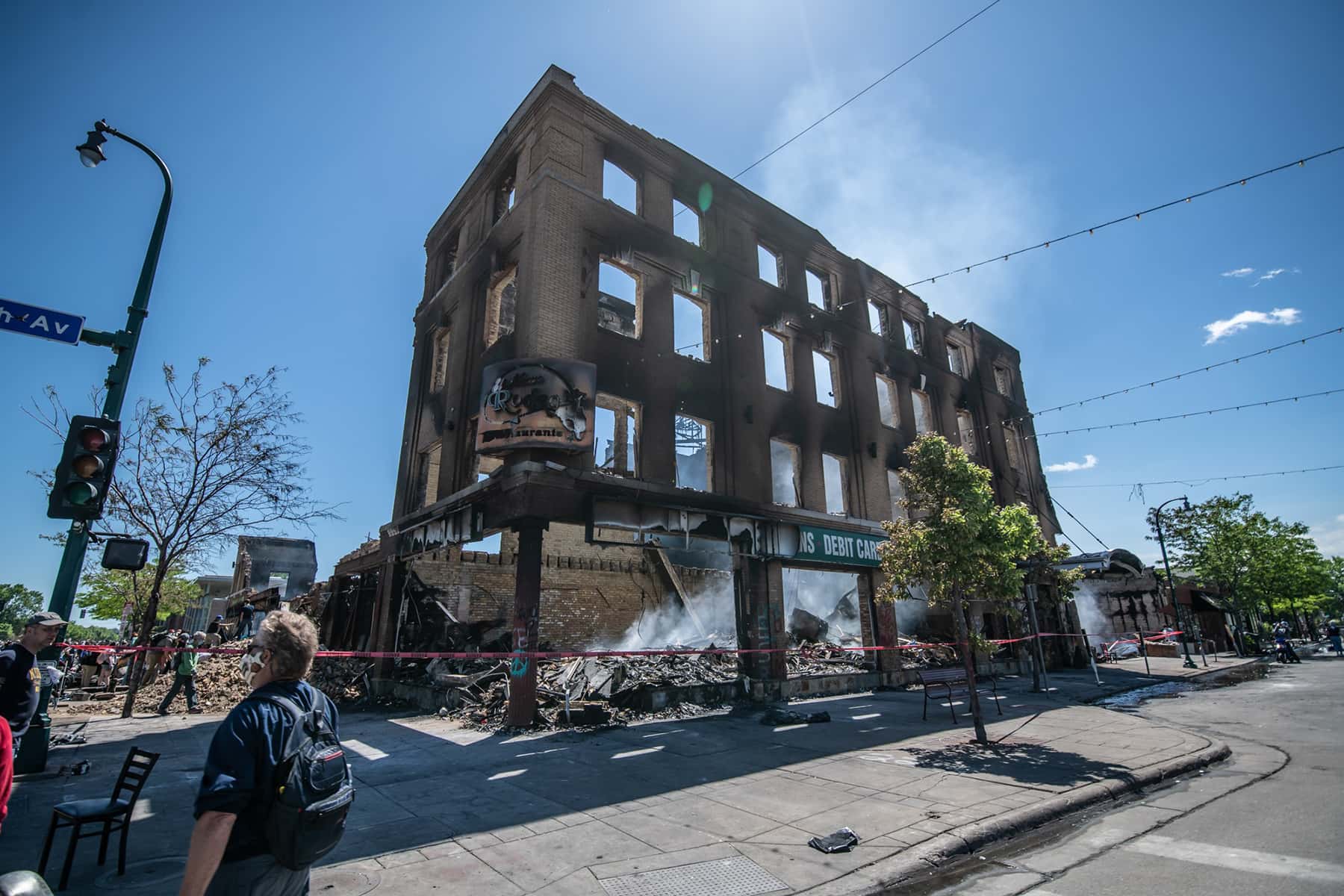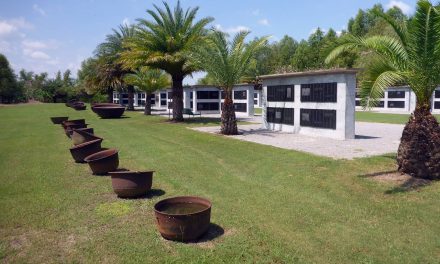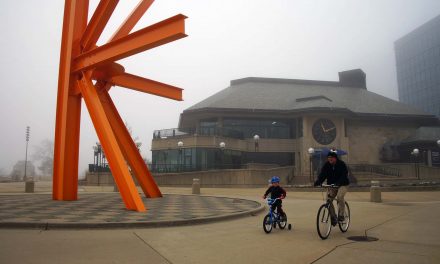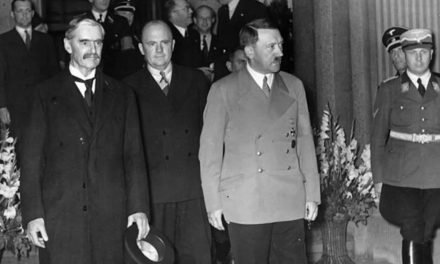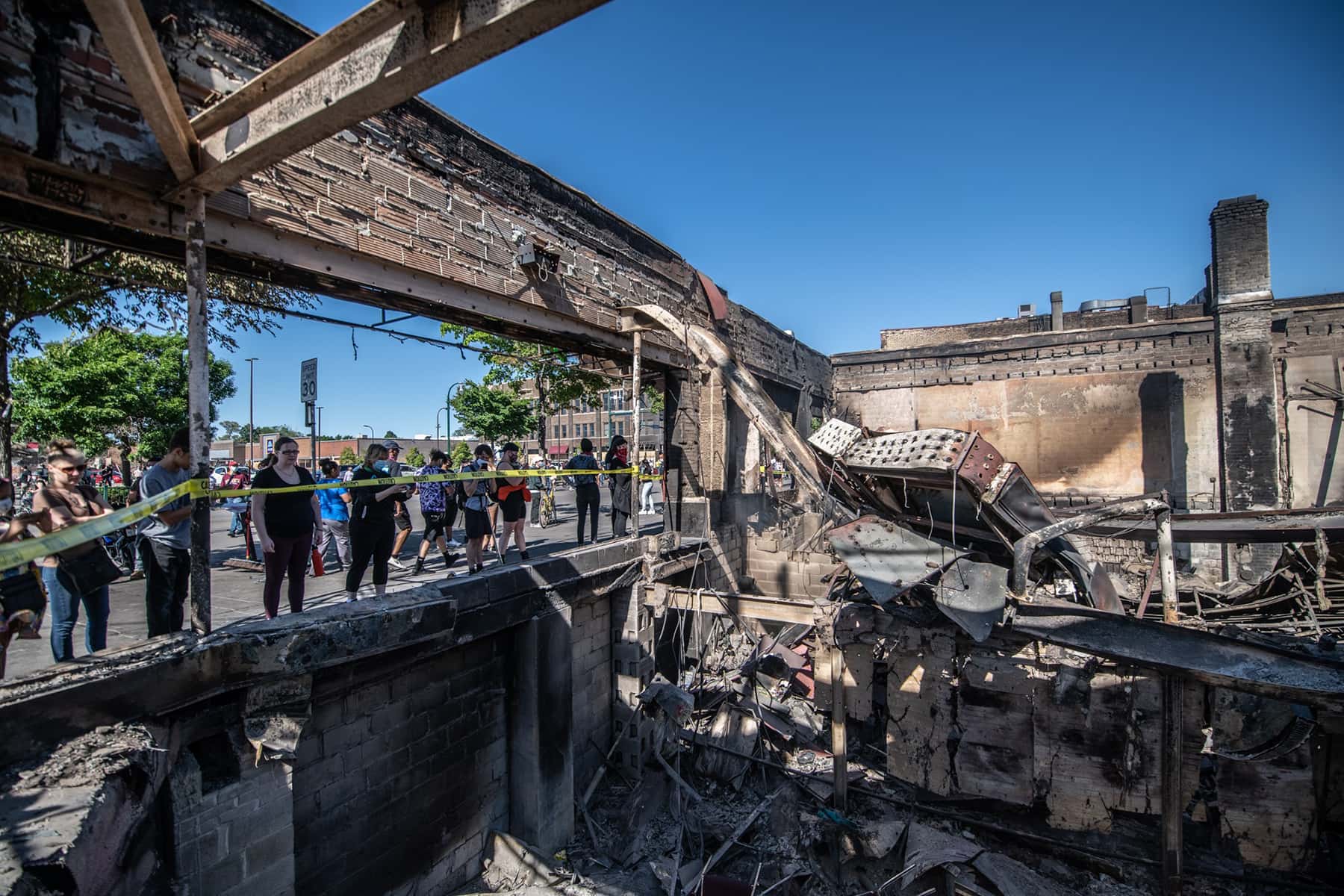
As Minneapolis underwent a several nights of protests over the May 25 death of George Floyd, Minnesota Governor Tim Walz said on May 30 that most rioters arrested were from outside of the city and sought to take advantage of the chaos.
In a press conference held in the early hours of May 30, Governor Walz said he was authorizing “full mobilization” of the state’s National Guard, adding 1,000 National Guard to join the 700 already there, calling it “an action that has never been taken in the 164 year history of the Minnesota National Guard.”
“Our goal is to decimate that force as quickly as possible,” Governor Walz said of rioters who looted and burned buildings. “Our cities of Minneapolis and St. Paul are under assault.”
Later in the day, Governor Walz said 2,500 guardsmen and women would be activated. He explained that about 80% of those arrested for looting and vandalism could be outside agitators.
“We are under assault by people who do not share our values, who do not value life and the work that went into this, and are certainly not here to honor George Floyd,” Governor Walz said. “They need to see that that line will stop and order needs to be restored. Let’s be very clear, the situation in Minneapolis is no longer in any way about the murder of George Floyd.
St. Paul Mayor Melvin Carter said most of the arrests made on the night of May 24 were of people from out of state and while “there’s a group of folks that are sad and mourning, there seems to be another group that are using Mr. Floyd’s death as a cover to create havoc.”
Department of Safety Commissioner John Harrington said they are contact-tracing the arrested and added that an investigation is underway about white nationalist groups posting online to encourage their members to use the protests as a cover to create chaos.
He said some of the 40 arrests made in the Twin Cities on May 29 were of people linked to white supremacist groups and organized crime.
“The people that are doing this are not Minneapolis residents,” Minneapolis Mayor Jacob Frey said. “They are coming largely from outside the city outside the region to prey on everything we have built.”
Lt. Governor Peggy Flanagan blamed those she said did not have the community’s interests at heart.
“There are white supremacists here. There are anarchists. There are people who are burning down institutions that are core to our identity,” said Flanagan.
On May 25, President Donald Trump tweeted a series of hostile threats directed at state and local leaders:
“….These THUGS are dishonoring the memory of George Floyd, and I won’t let that happen. Just spoke to Governor Tim Walz and told him that the Military is with him all the way. Any difficulty and we will assume control but, when the looting starts, the shooting starts. Thank you!”
Trump also attacked Mayor Frey on social media for his “total lack of leadership” and demanded that he “get his act together and bring the City under control, or I will send in the National Guard & get the job done right.”
While the military is prohibited from acting as domestic law enforcement, the Insurrection Act of 1807 give state officials the ability to call for their help.
Mayor Frey was unaware of Trump’s tweets at a news conference when asked by a reporter, and had the comment read to him. this response:
“Weakness is refusing to take responsibility for your actions. Weakness is pointing your finger at somebody else during a time of crisis. Donald Trump knows nothing about the strength of Minneapolis. We are strong as hell. Is this a difficult time period? Yes. But you better be damn sure that we’re gonna get through this.
Protests have spread to Milwaukee and across the country in recent days after a police officer was shown on video pushing his knee into the back of Floyd as he begged to be released, pleading for help because he could not breathe. He was pronounced dead an hour later.
Jon Parton
An unedited version of this article was originally published on courthousenews.com as Minnesota Officials Link Arrested Looters to White Supremacist Groups

